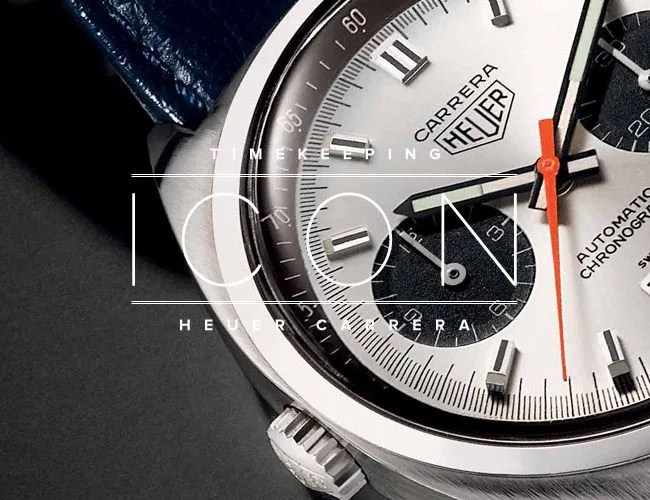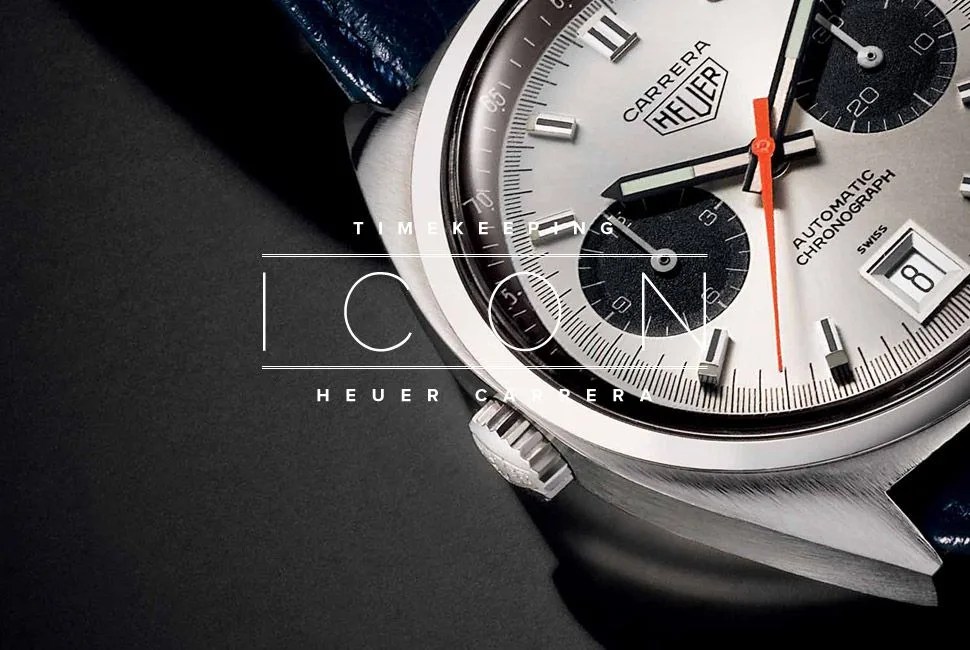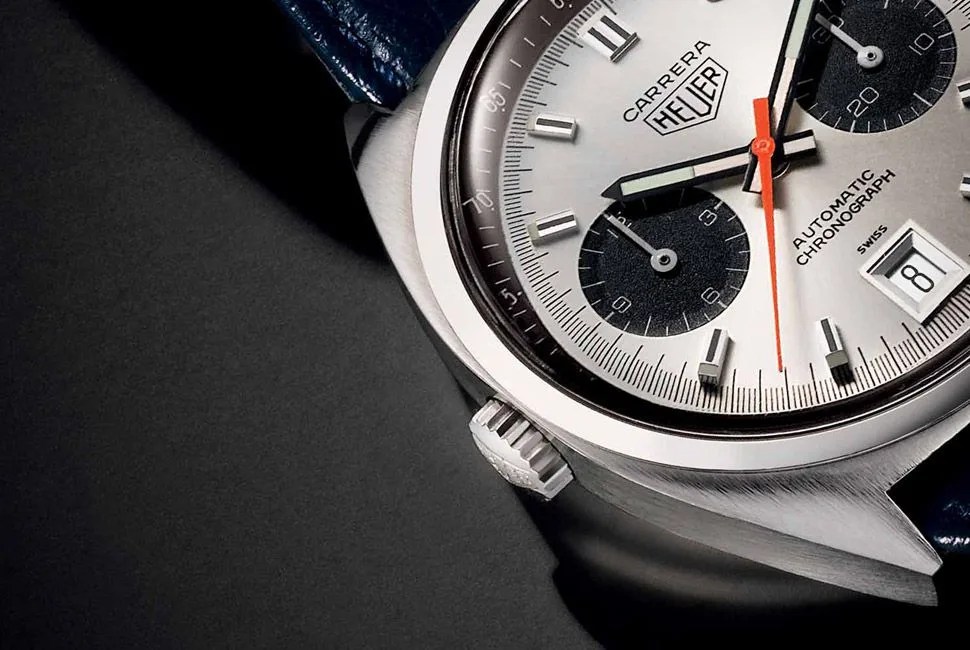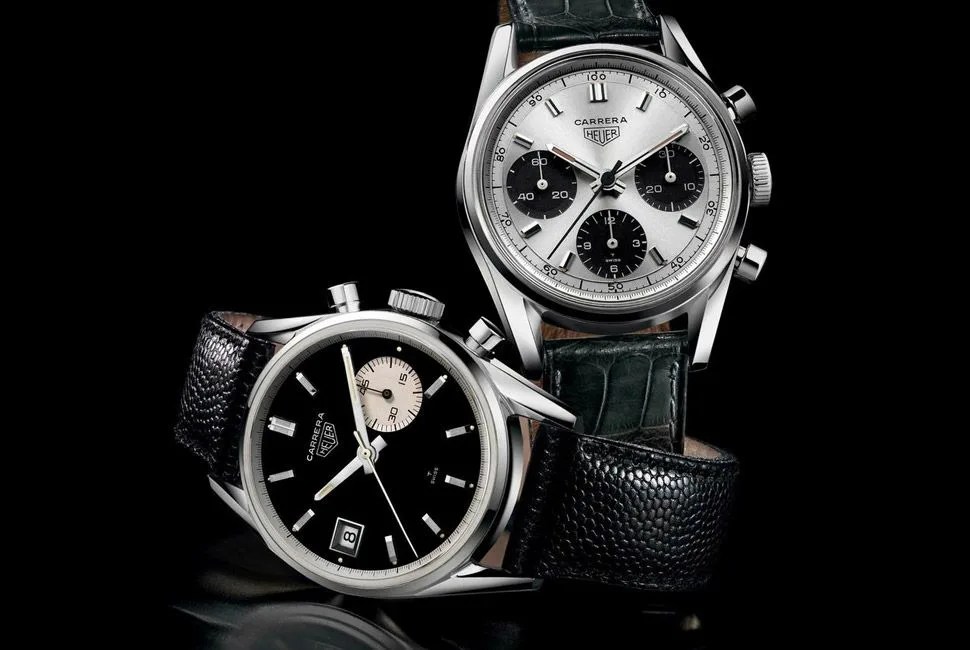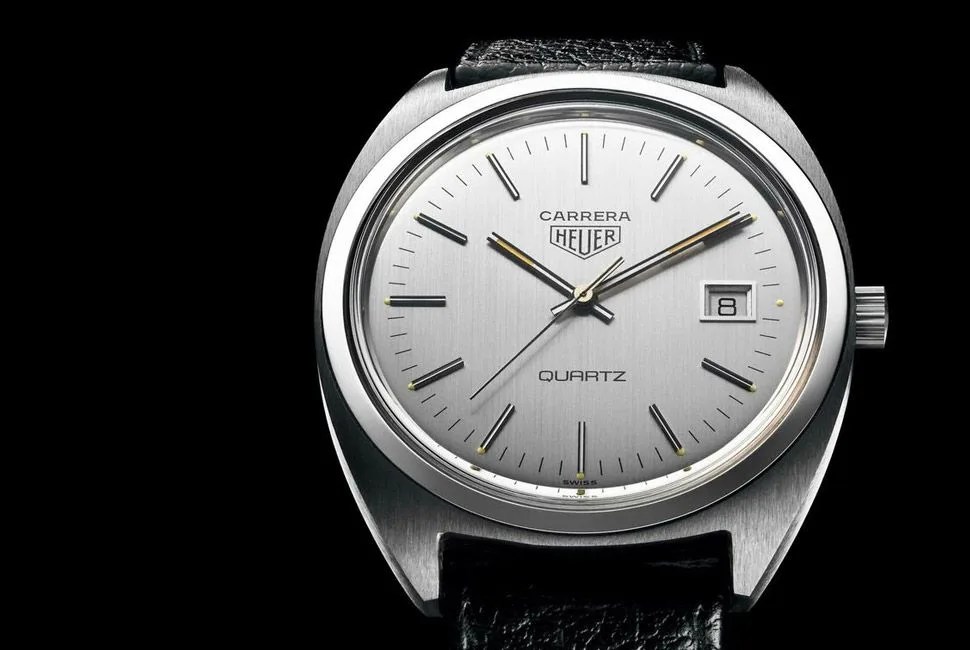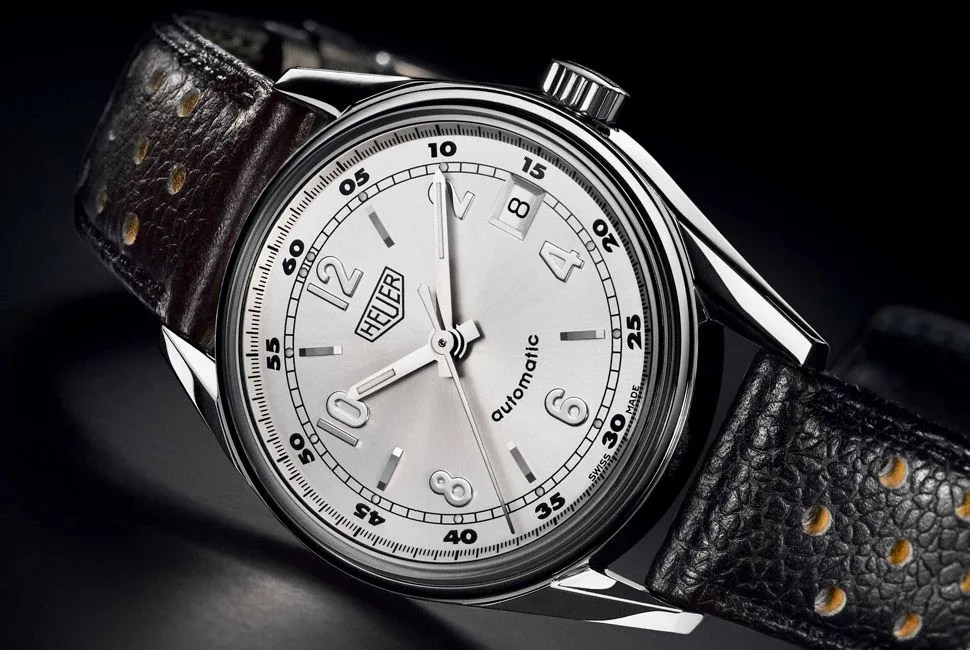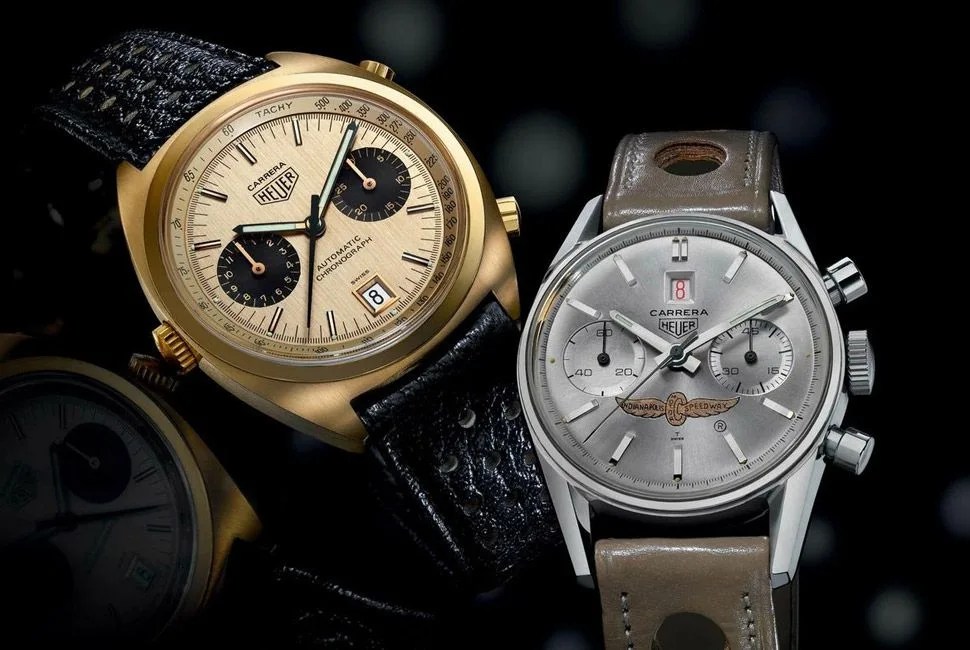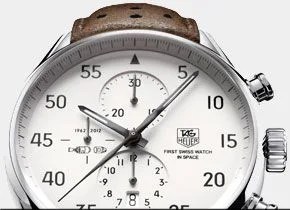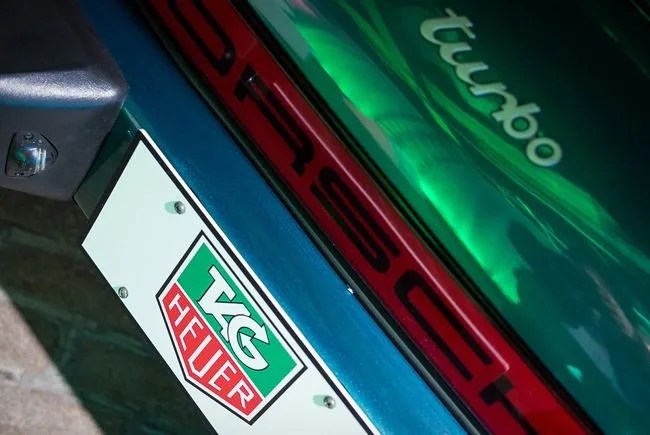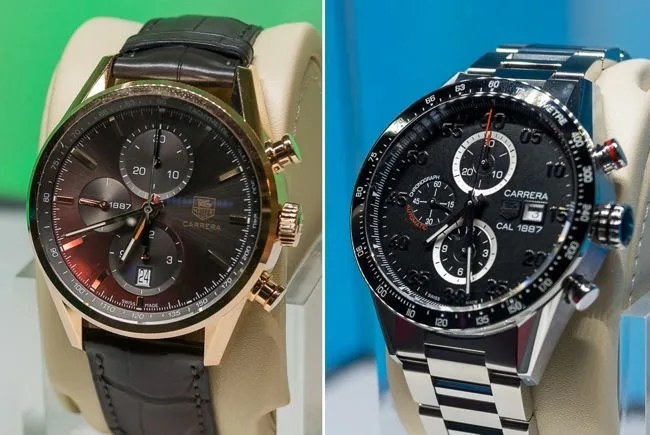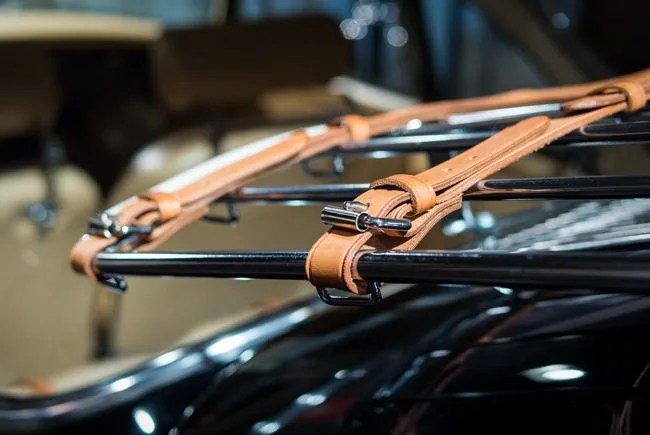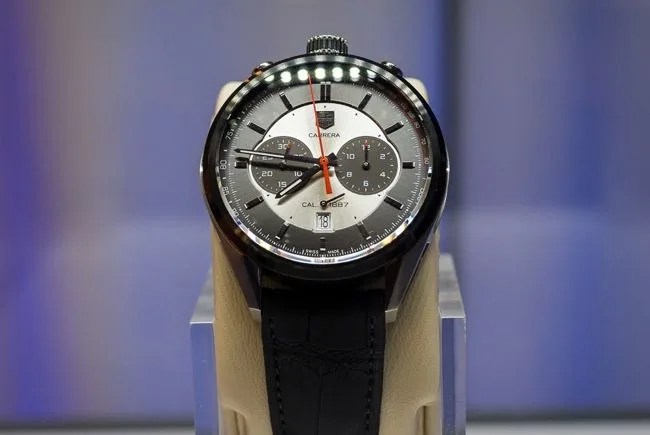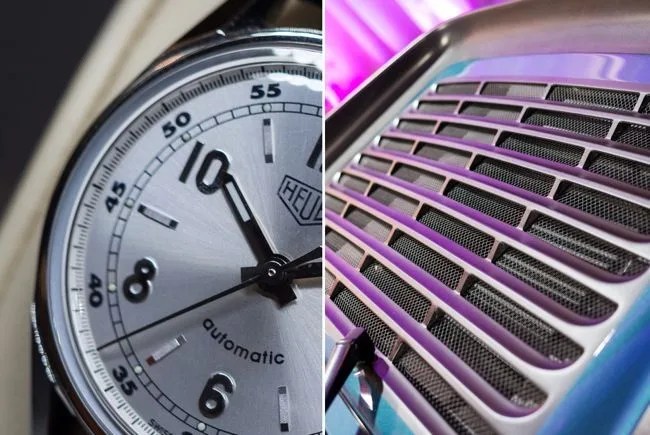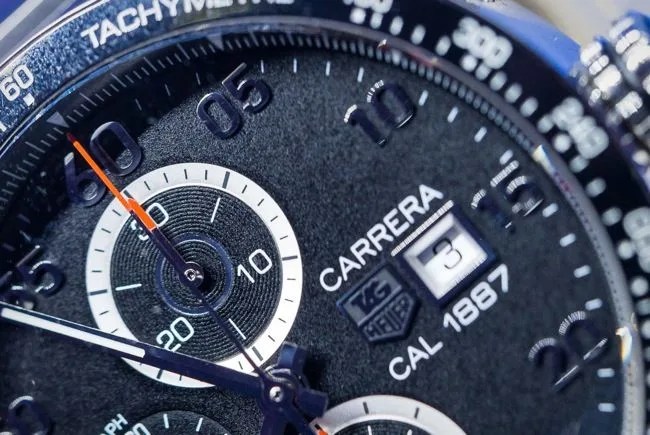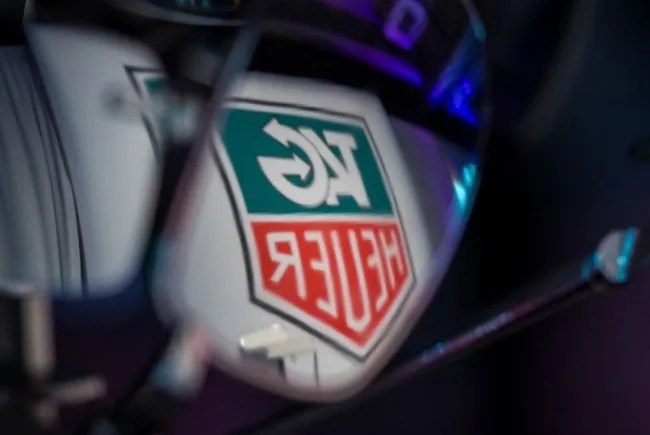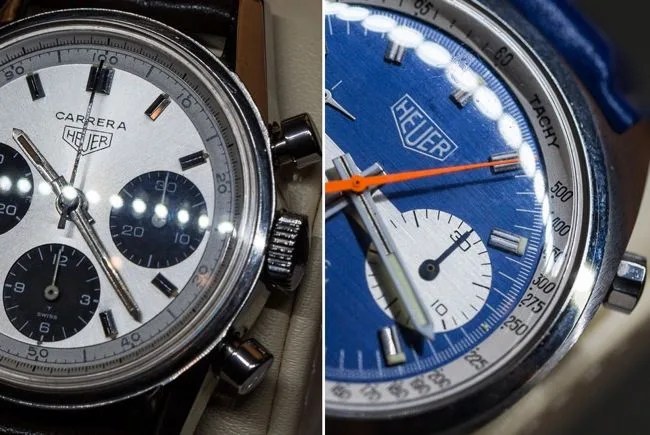6 photos
The Heuer Carrera can be summed up in one word: legible. When Jack Heuer, the great-grandson of Heuer’s founder, decided to introduce a new line of chronograph watches in 1963, ease of reading was the foremost design goal. Taking inspiration from the dashboard dials of racing cars, Jack developed what is arguably one of the best-looking chronographs ever made. These were watches designed to be worn on the track, in the cockpit of the world’s fastest cars, and many of the best drivers of the 1960s and 1970s chose Heuers accordingly. This was a time before brand ambassador programs paid celebrities to wear their watches; drivers like Mario Andretti, Gilles Villeneuve, Clay Regazzoni, Jochen Rindt, Niki Lauda, and Jo Siffert wore Heuers just because they liked them.
MORE TIMEKEEPING ICONS: Photo Essay: Celebrating 50 Years of the CarreraRolex GMT-Master | The Chronometer, Deconstructed | How to Buy a Vintage Icon | The Valjoux 7750 Chronograph
Designed for drivers and motorsport fans, the watch needed a name that would embody its automotive spirit. Heuer found the perfect choice in none other than the world’s most dangerous race, the Carrera Panamericana. With a route stretching from the Mexican border with Guatemala to Ciudad Juarez near the U.S. border, the race was a battle between the drivers, cars and a grueling mix of conditions. Though the race, held between 1950 and 1954, incorporated parts of the newly built Pan-American Highway, drivers faced unpaved roads, mountains, deserts, and temperature extremes; ever the marketing man, Jack wanted to capture the tenacity, moxie, and grit of these fearless racers in the new watch. The easy-to-pronounce, internationally recognized Carrera name was the perfect choice.
Although the Carrera was more of an evolution than a radical departure from the chronographs that Heuer had produced in the preceding years, it was different in several key ways — each of which mark the watch as the transition point from the historical to modern chronograph era. When the Carrera line was introduced at the Basel World watch fair in 1963, it was the first time that Heuer had used a single name for a series of watches, a marketing tactic less common then but now universally practiced. Chronographs in the 1940s and 1950s most often had very busy dials with tachymeter and decimeter rings crowding the center, but for the Carrera, Heuer moved these to the outer edge of the dial, giving the watch a remarkably clean and modern look.
Drivers like Mario Andretti, Gilles Villeneuve, Clay Regazzoni, Jochen Rindt, Niki Lauda, and Jo Siffert wore Heuers — just because they liked them.
The first two models of the Carrera line were the 36mm Carrera 12 (reference 2447), which had three registers for hours, minutes and seconds, and the Carrera 45 (reference 3647), which had a 45-minute and a seconds register. The registers were sunken into the dial in a style still used by many brands today, giving the dial a three-dimensional look that hadn’t been seen before. The Carrera 12 housed the venerable Valjoux 72 manual wind movement, the same that powered many of the era’s finer chronographs, including the Rolex Daytona. The Carrera 45 housed the Valjoux 92, an offshoot of the 72 that only counted to 45 minutes and left off the hour register. The Carrera’s success led Heuer to release more variations over the next few years, including the first Carrera with a date function in 1966. Advertised as “a wristwatch, a stopwatch and a calendar all in one!”, the Carrera 45 Dato (reference 3147) managed to add new functionality to the Carrera line without compromising the watch’s legibility.
